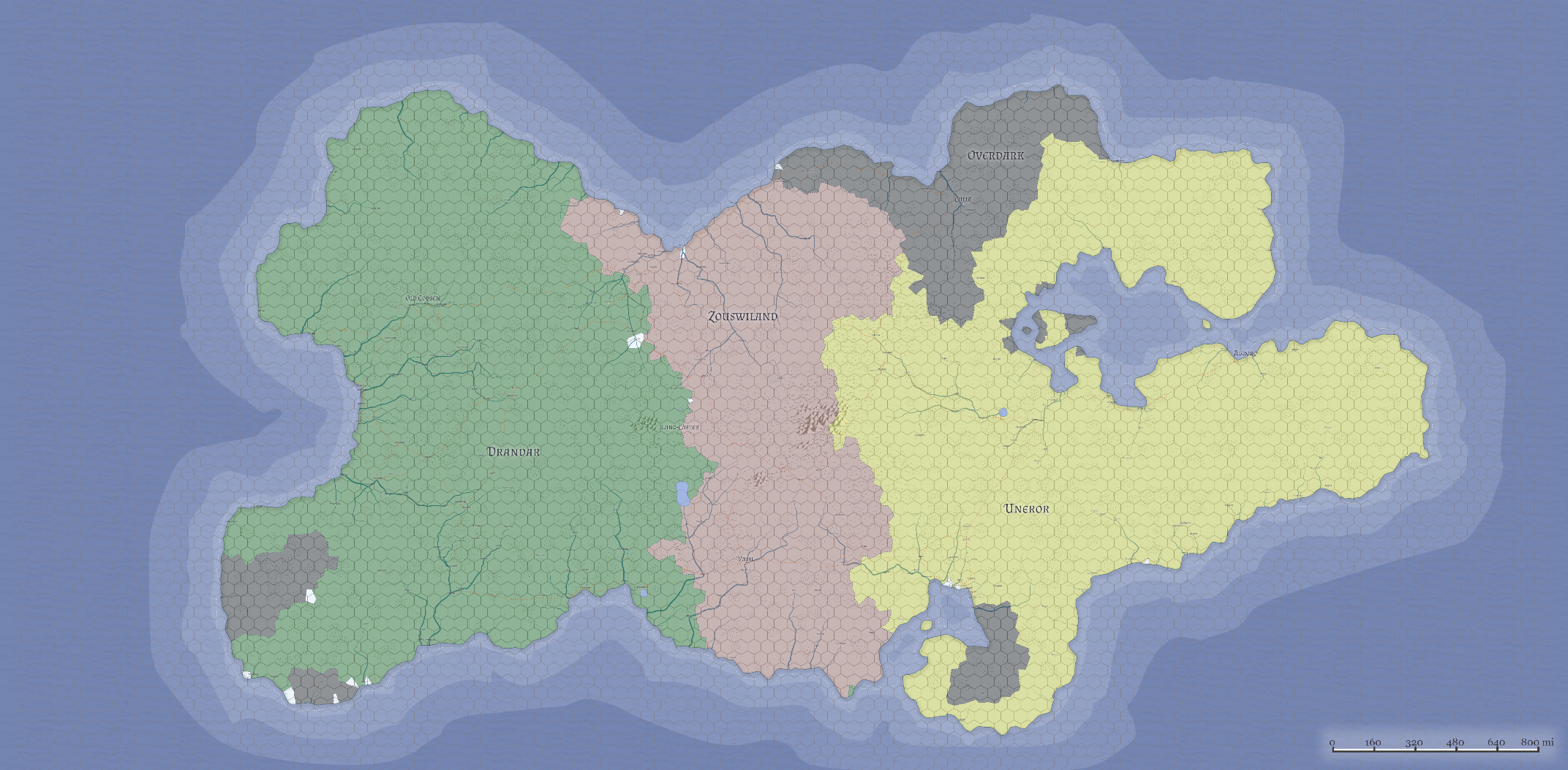Hell
Geography
Avernus: The layer was a charred wasteland of vast ashen plains covered in rubble and the occasional line of foothills and basalt mountains heaped with broken rocks of obsidian and quartz. The ubiquitous presence of rocks and boulders, some of which seemed to resemble tormented faces and shapes of creatures, rendered the terrain extremely treacherous and difficult to cross. A blood-red light suffused the very air and huge fireballs flew at random through the sky, occasionally impacting and exploding wherever they hit. There was no sun or stars in the Avernus sky. Travelers needed to get to shelter like a building or cave, lest they inevitably be struck.
The City of Dis: Despite being potentially infinite, the city of Dis always felt crowded and oppressive to anyone inside.The entire city was made of red-hot iron. Every wall and cobblestone burned to the touch. The material exuded a column of smoke that constantly shrouded the layer in a dark haze.
Minauros: The entire layer was a single stinking bog. The weather was a constant mix of rain and sleet that left an oily residue after it melted, followed by razor-sharp hail that fell from a perpetually gray sky. Volcanic ridges made of rock and obsidian could be found in several locations along the swamp. The swamp exuded a luminescent mist that provided some illumination. Temperatures varied enormously throughout the layer. Some areas were cold enough to freeze the bog over, while others boiled under intense heat, forming mud geysers.
Phlegethos: The layer's climate resembled the Elemental Plane of Fire. It was dominated by a scorching heat that ignited the air itself, creating seemingly sentient and aggressive flames that leapt at visitors but not at the residents. The ground had fissures that spewed jets of flame that flowed into rivers of liquid fire. It contained numerous volcanoes whose eruptive products flowed through rivers of lava into an incandescent ocean of magma.
Stygia: Stygia was a vast ocean of saltwater that was almost completely frozen. Its surface was almost entirely covered in ice floes and icebergs that crowded and completely covered the ocean. The only open body of water was the Styx, which kept its dark, oily water separated from the saltwater and meandered through the layer as if it were crossing a plain.
Malbolge: Malbolge was a gargantuan tumble of angular black stone blocks, each block ranging in size from a small city to a large metropolis, that formed a pile hundreds of miles/kilometers thick. The randomly tilted and ill-fitting blocks were honeycombed with angular passages and caverns causing non-flying travelers to frequently need mountaineering skills and risk avalanches. Stinking clouds of vapor rose up from the depths and lit the sky with the color of blood, causing cosmologists to speculate that the blocks of Malbolge may have rested on an infinite sea of lava. Corroborating reports have been heard of flammable materials left on the ground spontaneously combusting.[6] Most habitations in Malbolge were copper-clad fortresses built from black stone. The landscape of the layer was similar to the plane of Gehenna: a steep, infinite craggy incline often subject to avalanches that crushed most anything that got in the way. The copper-shod redoubts were teardrop-shaped or otherwise engineered to deflect tumbling boulders, but even those could not long withstand a direct hit from a major avalanche. Built along the slopes were pillars of adamantine that could support the avalanches, atop which platforms held suspended cages that held condemned devils. Prisoners were constantly injured by the incessant rockfalls, but never killed.
Maladomini: The landscape was dotted with abandoned cities that served as shelters and hideouts for runaway petitioners, deserters, criminals, and lost creatures from other planes. Between cities, the layer was marked by surface mines, deforested areas, and clogged canals. Rivers were completely covered in sludge, and some areas contained sentient pieces of polluted matter that reached and grasped before dying from the toxic air. The few remaining forests were either in a state of rotting or spontaneously combusted. A black ichor exuded from all matter in the layer.
Cania: The layer was marked by moving glaciers and icebergs that drifted as fast as a running person, constantly colliding with one another and with surrounding mountains of enormous sizes. Snow avalanches were common and violent. The weather was dominated by snow storms that howled with incessant winds. Thin layers of accumulated snow often hid deep crevasses that could engulf incautious explorers. The supernatural cold of Cania was substantially stronger than in Stygia, reaching temperatures of −60 °F (−51 °C), comparable to those in the Frostfell. It could quickly penetrate non magical clothing, freezing unprotected creatures within minutes and killing even those wearing gear designed to withstand cold temperatures in hours. Unsheltered creatures ran a constant risk of freezing to death. Preserved corpses were frequently uncovered after collisions between glaciers, while other glaciers seemed to hold unknown frozen creatures at their very centers. Some of the shapes within the ice suggested that they were archons or devas fighting unknown spined creatures, while others seemed like entire alien cities. The layer contained scattered laboratories and libraries within isolated citadels.
Nessus: The layer was a featureless plain with jagged edges that extended 2500 miles (4000 kilometers) from east to west and 1100 miles (1800 kilometers) from north to south, floating in an endless red void. The plains were scarred by chasms and ravines several thousand miles deep, and were frequently ravaged by fiery storm winds.
Characters in Location



Comments